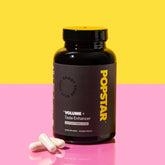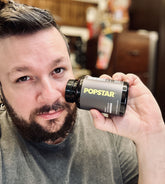No ejaculation orgasm, sometimes referred to as a “dry orgasm,” is a phenomenon in which a male experiences the pleasurable sensations of climax but does not expel semen. While it can occur under various circumstances, this topic is often lesser known or misunderstood within the broader context of sexual and reproductive health. In this comprehensive guide, we will explore the mechanisms behind a no ejaculation orgasm, potential causes, possible effects on fertility, and considerations for those who might experience or deliberately pursue this type of orgasmic response. We will also address common questions people often ask regarding no ejaculation orgasm, ensuring you have a solid understanding of this element of men’s health.
Table of Contents
- What Is a No Ejaculation Orgasm?
- How Does a No Ejaculation Orgasm Happen?
- Common Causes of No Ejaculation Orgasm
- Potential Benefits and Considerations
- Impact on Relationships and Emotional Well-Being
- Frequently Asked Questions
- Clinical and Therapeutic Approaches
- Lifestyle and Home Strategies
- When to Consult a Healthcare Provider
- Conclusion
- References
What Is a No Ejaculation Orgasm?
No ejaculation orgasm occurs when a man reaches what is typically the peak of sexual pleasure — the orgasm — without experiencing the concurrent release of semen through the urethra. In typical male physiology, an orgasm is accompanied by ejaculatory contractions that expel semen. However, in some individuals or specific circumstances, these contractions do not result in semen exiting the body. This phenomenon is sometimes called a “dry orgasm” in casual parlance.
While a no ejaculation orgasm is often discussed in connection with conditions like retrograde ejaculation (where semen is released internally into the bladder rather than through the urethra), not all no ejaculation orgasms are caused by retrograde ejaculation. Some individuals, through specific practices, deliberately attempt to separate orgasmic sensation from ejaculation. Others might experience it as a result of surgery, medication side effects, or underlying health conditions. Understanding these distinctions is crucial for anyone curious about this phenomenon or those experiencing it unexpectedly.
The concept of a no ejaculation orgasm aligns with broader men’s health discussions concerning sexual function, male fertility, pelvic floor dynamics, and the synergy between physiological and psychological factors during intercourse. It can also bring up concerns about masculinity, intimacy, and sexual satisfaction, highlighting the importance of open communication with partners and healthcare providers.
How Does a No Ejaculation Orgasm Happen?
To comprehend why ejaculation might not occur during orgasm, it helps to review the typical stages of male sexual response:
- Excitement (Arousal): Blood flow increases to the penis, leading to an erection. The body prepares for possible ejaculation as the prostate and seminal vesicles begin producing and storing fluid.
- Plateau: A sustained level of arousal occurs, accompanied by elevated heart rate and muscle tension. The body readies itself for the orgasmic peak.
- Orgasm: Once the sexual tension reaches a critical threshold, orgasm occurs. In typical male physiology, rhythmic contractions propel semen through the urethra. This moment is perceived as the climax, a surge of pleasure lasting several seconds.
- Resolution: Post-orgasm, the body gradually returns to its baseline state, with a decrease in heart rate and a sense of relaxation.
In a no ejaculation orgasm, the pleasurable “orgasmic feeling” occurs, but little to no semen is expelled at the moment of climax. There can be two broad explanations:
- Retrograde Ejaculation: Semen travels into the bladder instead of out through the urethra. This is sometimes due to a malfunctioning or weakened bladder neck sphincter. Retrograde ejaculation is common after certain surgical procedures (e.g., prostate surgery) or may be a side effect of specific medications.
- Discrete Orgasm-Ejaculation Separation: Through specific pelvic floor training or simply as a physiological anomaly, some individuals can engage in orgasmic contractions without forcefully expelling semen. This can be intentional (through certain practices) or inadvertent.
Key bodily processes at play include muscle contractions in the pelvic region, involvement of the prostate and seminal vesicles, and neurological signals that govern the timing and force of ejaculation. When these processes are altered — due to nerve function changes, muscle control modifications, or surgical interference — a no ejaculation orgasm can result.
Common Causes of No Ejaculation Orgasm
Multiple factors may contribute to a no ejaculation orgasm. Recognizing these causes can help determine whether it’s a benign occurrence or if medical attention might be warranted.
1. Surgical Procedures
Procedures involving the prostate or lower urinary tract, such as a transurethral resection of the prostate (TURP), can affect the pathways responsible for semen expulsion. When the internal sphincter near the bladder is disrupted, it might not close properly, causing semen to flow backward into the bladder or be minimally discharged.
2. Medications
A range of prescription medications can interfere with the normal ejaculatory process. Some common culprits include:
- Antidepressants (particularly certain SSRIs)
- Antipsychotics
- Alpha-blockers (used to treat high blood pressure or benign prostatic hyperplasia)
- Blood pressure medications that affect muscle tone in the bladder neck
Individuals noticing changes in ejaculation during a new medication regimen should discuss their concerns with a medical professional.
3. Neurological Conditions
Nerve damage or disorders such as multiple sclerosis, spinal cord injuries, or diabetic neuropathy can alter normal signaling pathways involved in ejaculation. When these nerves don’t function appropriately, the communication between the brain, spinal cord, and penile muscles can be fragmented, leading to an orgasm with reduced or absent semen expulsion.
4. Psychological or Emotional Influences
While orgasms have strong physiological underpinnings, psychological stressors can also play a role. Anxiety, depression, or relationship issues can stall the ejaculatory response, causing men to feel the plateau or even the orgasmic wave but not release any semen. In some cases, this is a single or sporadic event; in other cases, it may persist.
5. Intentional Practices
Some individuals intentionally cultivate the ability to climax without ejaculation, often motivated by concepts of preserving sexual energy, prolonging sexual activity, or exploring tantric sex. This may involve pelvic floor muscle control, breathwork, or other “mindful orgasm” techniques that alter the typical progression from orgasm to ejaculation.
Potential Benefits and Considerations
No ejaculation orgasm can be a subject of curiosity, but it is essential to discuss potential advantages and risks or drawbacks:
Potential Benefits
- Extending Sexual Pleasure: Some men claim that learning to achieve orgasm without ejaculating allows them to have multiple orgasms per sexual session. The purported reason is that the energy and sexual drive are not depleted through ejaculation, enabling continued arousal.
- Reduced Post-Orgasmic Lethargy: Ejaculation often triggers a refractory period, during which the desire for continued sexual activity diminishes. Anecdotally, men who experience no ejaculation orgasms report a quicker ability to resume sexual contact and maintain libido.
- Increased Body Awareness: Practices aimed at separating ejaculation from orgasm often require heightened attention to pelvic floor muscles, breathing techniques, and mental focus. This can enhance overall sexual wellness and self-awareness.
Key Considerations and Potential Drawbacks
- Fertility Implications: If semen is not exiting the urethra, it may harm an individual’s or couple’s ability to achieve pregnancy naturally. Men who experience no ejaculation orgasm and wish to start a family may need to explore medical options.
- Health Underpinnings: Chronic no ejaculation orgasms without obvious reason — such as medication usage or intentional practice — could be indicative of an underlying medical issue (nerve damage or hormonal imbalance). Consulting a healthcare provider helps rule out serious conditions.
- Psychological Impact: Although some experience relief or even pride in controlling ejaculation, others might feel distressed, concerned about virility, or worried about relational dynamics. Understanding the cause is often critical for psychological well-being.
Impact on Relationships and Emotional Well-Being
Sexual satisfaction and intimacy levels can be profoundly connected to the quality of a romantic relationship. Partners might find a no ejaculation orgasm either intriguing or confusing if it occurs unexpectedly. Open communication can mitigate misunderstandings and ensure both individuals feel emotionally and physically fulfilled.
Here are some ways no ejaculation orgasm might influence a couple’s sexual relationship and overall emotional connection:
- Communication Hurdles: If there is a lack of clarity about why ejaculation is absent, partners might worry about sexual desirability, possible hidden health issues, or emotional disconnection.
- Exploring Alternatives: Absence of the expected ejaculatory response may open conversations about expanding sexual activities or trying new approaches to intimacy. Couples might explore edging, mind-body techniques, or different positions to maintain heightened arousal.
- Reinforcing Emotional Bonds: Honest discussions about the phenomenon can encourage deeper trust and empathy, particularly if both partners view it as an opportunity for mutual learning and support.
In some cases, couples counseling or sex therapy can provide a constructive environment to address any lingering doubts. Strengthening emotional well-being and fostering mutual understanding often lead to a healthier sexual connection, including potential solutions for issues that arise.
Frequently Asked Questions
1. Can a man experience orgasm without releasing semen?
Yes. In a no ejaculation orgasm, the individual senses orgasmic pleasure but does not expel seminal fluid. This can happen because of retrograde ejaculation, certain medications, nerve issues, or intentional control via specialized sexual techniques.
2. Does no ejaculation orgasm affect fertility?
It can. If semen never exits the penis, natural conception may be impacted because sperm isn’t deposited in the partner’s reproductive tract. Retrograde ejaculation, for instance, may require medical interventions if pregnancy is desired.
3. Is no ejaculation orgasm the same as retrograde ejaculation?
Not always. Retrograde ejaculation is a subset of reasons for why a man might not release semen during orgasm. However, individuals can experience a dry orgasm without retrograde flow if they have learned to separate orgasmic contractions from expelling semen.
4. Does a no ejaculation orgasm feel the same as a regular orgasm?
The subjective sensation can be similar, though some men report a slightly different or reduced intensity compared to a typical ejaculatory orgasm. Others, especially those who train themselves to achieve non-ejaculatory orgasms, may assert that the sensation is equally or even more pleasurable.
5. Can medications cause no ejaculation orgasms?
Yes, especially medications like certain antidepressants, antipsychotics, and alpha-blockers, which can change nerve responses and muscle tone in the bladder neck. Always discuss new or unexpected sexual side effects with a prescribing physician.
6. Is it harmful to have orgasm without ejaculation?
Generally, a no ejaculation orgasm is not harmful if it occurs occasionally or is the result of intentional practice. However, repeated dry orgasms of unknown origin may signal an underlying health issue, so it is wise to consult a healthcare professional if the phenomenon is persistent.
7. Are there any immediate health risks associated with a no ejaculation orgasm?
Most men do not experience adverse health consequences directly from having a no ejaculation orgasm. However, if the cause is an untreated condition (like nerve dysfunction), the underlying issue might require medical attention.
8. Will practicing no ejaculation orgasm improve sexual stamina?
Some men practice techniques such as pelvic floor exercises and breathwork to delay or avoid ejaculation, which they believe can improve stamina. Results vary among individuals, but certain controlled-breathing and muscle-training strategies can support longer sexual sessions.
9. Can stress or anxiety lead to a no ejaculation orgasm?
Yes. Psychological factors like stress, anxiety, performance pressure, or depression can interrupt the normal ejaculatory process. Even if the orgasmic feeling occurs, the stress response might alter the physiological cues necessary for ejaculation.
10. What happens to the semen if it is not released?
In cases of retrograde ejaculation, semen moves into the bladder and is later expelled when urinating. If a man voluntarily learns to separate orgasm from ejaculation without retrograde flow, the body might eventually reabsorb sperm or produce an altered pattern of partial ejaculate.
Clinical and Therapeutic Approaches
For men concerned about no ejaculation orgasms, a range of approaches may help address the underlying cause and potentially restore a typical ejaculatory process should that be desired.
1. Medical Evaluation
A comprehensive review by a urologist or qualified healthcare provider can help isolate the cause, be it a medication side effect, anatomical issue, medical condition, or psychological factor. Evaluations might include:
- Physical Exam: Assessment of the pelvic region, genital structures, and possible nerve function tests.
- Urinalysis: Sometimes, post-ejaculatory urine analysis is performed to detect sperm in the urine, confirming retrograde ejaculation.
- Blood Tests: Checking hormone levels (e.g., testosterone) can ascertain if endocrine imbalances contribute to sexual dysfunction.
2. Medication Adjustment
If the primary cause of dry orgasm seems to be pharmaceutical, changing the dose or type of medication may mitigate the issue. However, any modifications to prescription drugs must be done under professional medical advice to avoid unintended consequences.
3. Surgical Interventions
For men who have experienced surgical changes to the prostate or bladder neck, additional medical procedures might be recommended, though this is less common. The feasibility or merits of corrective surgery will depend on overall health status, patient goals, and the severity of the anatomical alteration.
4. Psychological Support
Counseling or therapy can address anxiety, performance pressure, or emotional blocks contributing to the absence of ejaculation. Cognitive-behavioral therapy (CBT) or sex therapy might be especially helpful for men who find psychological barriers at the root of the dry orgasm phenomenon.
Lifestyle and Home Strategies
For some men, adopting certain practices or adjustments can relieve the stressors or physiological constraints contributing to a no ejaculation orgasm. These strategies may not cure underlying conditions but can offer supportive benefits:
- Pelvic Floor Exercises (Kegels): Targeting the pelvic floor muscles, which help support bladder control and sexual function, may enhance ejaculatory control. Kegels can be useful for men seeking either better orgasmic control or help with involuntary leakage and urinary issues.
- Stress Reduction Techniques: Engaging in mindfulness, yoga, or meditation can alleviate anxiety that may be dampening ejaculatory signals. Taking time to relax before and during intimate moments might help restore a typical response.
- Communication with Partner: Open discussions about one’s experience, goals, and any underlying concerns helps both partners set realistic expectations. Anxiety about sexual performance can be greatly reduced when both partners understand potential causes and solutions.
- Regular Exercise and Balanced Diet: A healthy cardiovascular system and well-balanced hormonal profile support overall sexual health. Exercise also promotes blood flow and contributes to better physical stamina, which may enhance orgasmic potential.
Although these strategies are generally beneficial for sexual health, persistent no ejaculation orgasms of unknown cause may require professional intervention.
When to Consult a Healthcare Provider
Every man’s body is different, and occasional changes in sexual response are not always a cause for alarm. However, if no ejaculation orgasms occur frequently or come with any additional troubling symptoms, it may be time to seek medical advice. Specific signals to watch for include:
- Unexpected onset of dry orgasms that persist over many weeks
- Accompanying urinary or reproductive issues, such as painful urination or difficulty achieving erections
- Feelings of distress, anxiety, or frustration influencing day-to-day life
- Concerns about fertility and family planning
- Recent surgeries or prescription changes correlated with dry orgasms
A conversation with a primary care physician, urologist, or referral to a specialist often clarifies the root cause, leading to viable solutions or therapy options.
Conclusion
No ejaculation orgasm is more than just a curious quirk of male sexual response — it can have profound implications for fertility, relationships, and personal well-being. For some, it represents a deliberate exploration of alternative sexual practices; for others, it can be an unwelcome consequence of surgery, medication, or health conditions. Understanding the mechanisms behind no ejaculation orgasm provides insight into how a man’s body, hormones, and nerves interact during sexual activity.
Whether you view a dry orgasm as a potential avenue toward expanded sexual experiences or a problem that demands medical attention depends on your personal goals and circumstances. If there is any doubt regarding the cause, especially if it leads to distress or complications with intimacy, consulting a healthcare provider is recommended. Equally important is communication with sexual partners so both parties maintain realistic expectations and feel empowered to make well-informed decisions about their sexual trajectory.
Ultimately, the journey to understanding and potentially managing a no ejaculation orgasm can benefit from a holistic approach: blending knowledge of physiology, open dialogue with partners, supportive medical input, and self-awareness of mind-body connections. By demystifying the subject and addressing prevalent questions, we can help men and their partners make informed decisions about sexual health and wellness.
References
- National Institute of Diabetes and Digestive and Kidney Diseases (NIDDK). Erectile Dysfunction & Other Sexual Problems in Men.
https://www.niddk.nih.gov/ - American Urological Association (AUA). Retrograde Ejaculation: Causes & Treatments.
https://www.auanet.org/ - Mayo Clinic. Male Sexual Dysfunction.
https://www.mayoclinic.org/ - International Society for Sexual Medicine (ISSM). Ejaculation Disorders.
https://www.issm.info/




















































